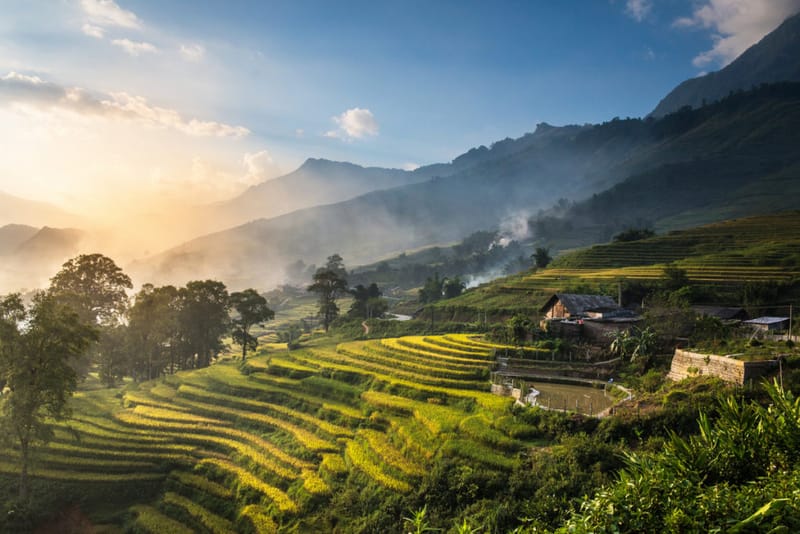
Sapa, nestled in Vietnam's Lào Cai Province near the Chinese border, is a captivating destination renowned for its breathtaking landscapes, rich cultural tapestry, and diverse ethnic communities. Situated at an elevation of approximately 1,500 meters, this former French hill station offers a unique blend of natural beauty and cultural heritage.
Geography and Climate
Dominated by the Hoàng Liên Sơn mountain range, Sapa is home to Mount Fansipan, Vietnam's highest peak at 3,143 meters. The region's terrain features terraced rice fields, lush valleys, and dense forests. Sapa experiences a subtropical highland climate, with cool temperatures year-round. Summers (May to August) are moderate and rainy, while winters (November to March) can be foggy and cold, occasionally bringing snowfall—a rarity in Vietnam.
Cultural Diversity
Sapa is a melting pot of ethnic minorities, including the Hmong, Red Dao, Tay, Giay, and Xa Pho peoples. Each group maintains distinct languages, customs, and traditional attire. The Hmong and Red Dao are particularly prominent, known for their vibrant textiles and intricate embroidery. Visitors can immerse themselves in local cultures by participating in festivals like the "Roong Pooc" of the Giay or the "Cap Sac" initiation ceremony of the Red Dao.
Top Attractions and Activities
Mount Fansipan: Dubbed the "Roof of Indochina," Mount Fansipan is accessible via a 6-kilometer cable car ride, offering panoramic views of the surrounding landscapes.
Muong Hoa Valley: This picturesque valley boasts terraced rice fields, ancient stone carvings, and traditional villages, making it ideal for trekking and cultural exploration.
Ethnic Markets: Markets like Bac Ha and Can Cau come alive on weekends, where locals don traditional attire to trade goods, offering visitors a glimpse into the region's vibrant commerce and culture.
Silver Waterfall and O Quy Ho Pass: Located about 12 kilometers from Sapa town, Silver Waterfall cascades from a height of over 200 meters, while the O Quy Ho Pass offers breathtaking views of the Hoàng Liên Sơn range.
Sustainable Tourism and Homestays
Sapa promotes sustainable tourism through community-based initiatives. Homestays in villages like Ta Van and Ta Phin allow visitors to experience daily life with local families, contributing to the local economy and fostering cultural exchange . Eco-friendly accommodations like Topas Ecolodge emphasize environmental responsibility while providing comfort and stunning views.
Culinary Delights
The region's cuisine reflects its cultural diversity. Local specialties include "thang co" (a traditional Hmong dish), grilled stream fish, and bamboo sticky rice. Markets and homestays offer authentic dining experiences, allowing visitors to savor traditional flavors.
Best Times to Visit
Spring (February to May): Flowers bloom, and the weather is pleasant, making it ideal for trekking and sightseeing.
Autumn (September to November): The rice terraces turn golden, offering spectacular views and photo opportunities.
Winter (December to February): Cool temperatures and occasional snowfall create a unique atmosphere, especially appealing to those seeking a different side of Vietnam.
Sapa's harmonious blend of natural beauty, cultural richness, and commitment to sustainable tourism makes it a must-visit destination for travelers seeking an authentic and immersive experience in Vietnam.


